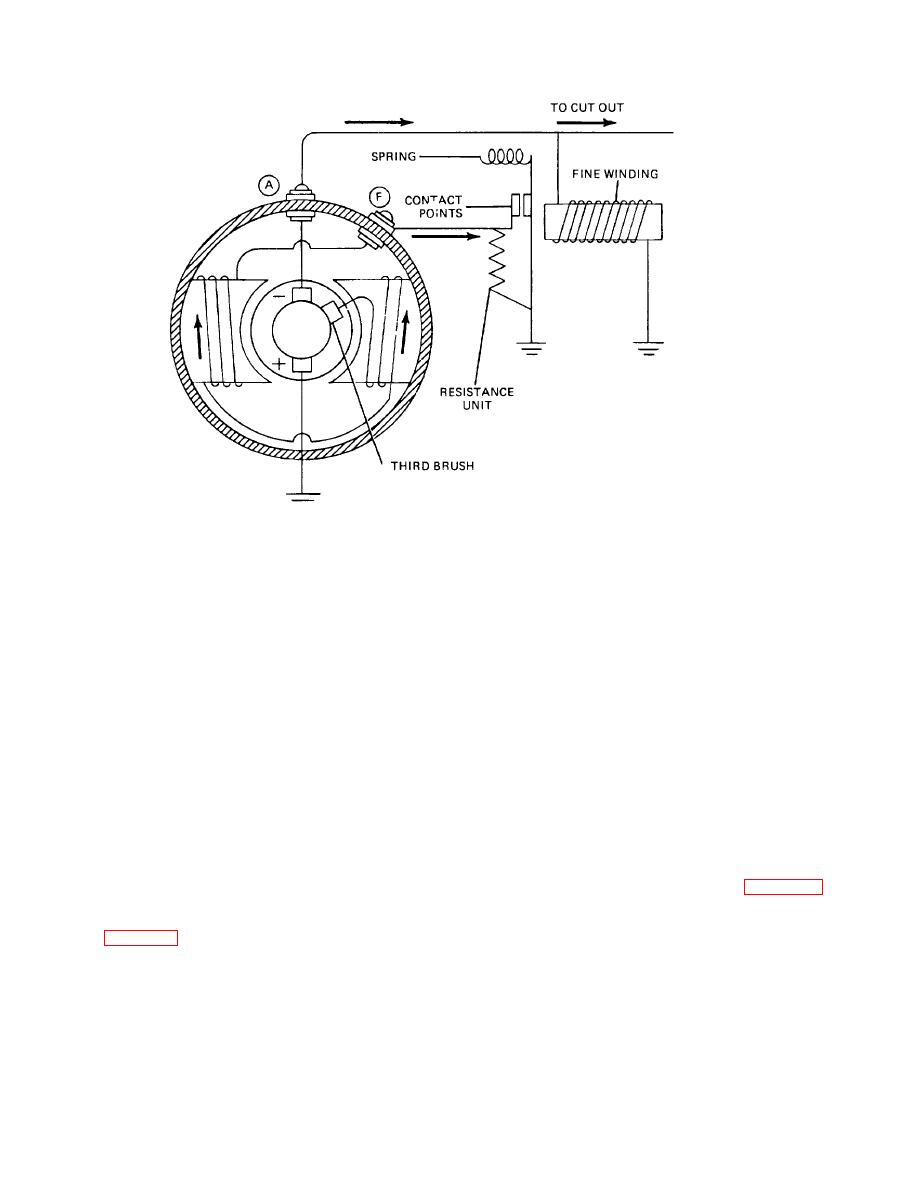
| Tweet |

Custom Search
|
|

|
||
 TM 9-8000
Figure 13-15. Thermostatic Control of Third-Brush Generator.
d. Thermostatic Control.
long enough for the high charging rate to heat the
generator, the thermostat contacts open (due to the
bending of the thermostat blade), causing a resistance
(1) Another type of control for the third-brush generator
unit across the contacts to be connected in series with
uses a thermostat blade to control the field strength. If
the third-brush field and thereby reducing the current
the generator is set to give the greatest possible current
output. The charging rate is reduced approximately 30
to take care of demands during the winter, the battery
percent when the thermostat contacts are opened.
would be in a constant state of overcharge in warm
weather and soon be ruined. The thermostat blade
(4) The chief advantages of thermostatic control are
automatically takes care of the changing current
that it gives a large battery-charging rate in cold weather
demands under different conditions.
when the efficiency of the battery is lower than in warm
weather, and also a larger charging rate when the
(2) The control consists of a bimetal thermostat blade
vehicle is being driven intermittently and the demands on
made of a strip of spring brass welded to a strip of nickel
the battery are greater because of frequent use of the
steel. The blade warps or bends when heated, due to
starter. This control also prevents the generator and
the greater expansion of the brass side. The blade is set
battery from overheating in summer by reducing the
so that a contact on its end is held firmly against a fixed
charging rate when the temperature rises.
contact at low temperatures. When the temperature
rises to approximately 1600 to 1650F, the blade bends
and separates the contacts.
13-17. Split-Series Field Generators (Fig. 13-17
a. Generator regulation sometimes is accomplished by
(3) The thermostat is connected in the third-brush field
means of a split-series field. A generator with this
circuit (fig. 13-16) so that the full field current passes
method of regulation combines third-brush, reversed-
through the thermostat contacts when closed, permitting
series
(differential),
and
cumulative-compound
full current from the generator. After the engine has
principles.
been run
TA233554
13-16
|
||
 |
||